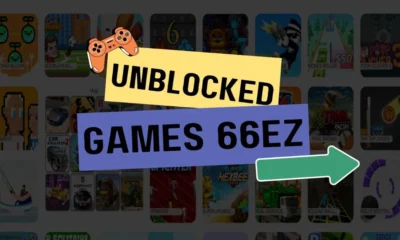GENERAL
The Hidden Costs of DIY Moves and Why Professional Movers Are Worth It

Moving is often a significant financial and emotional undertaking, and many people attempt to cut costs by managing the process themselves. While the idea of a do-it-yourself (DIY) move may seem cost-effective at first glance, the hidden expenses and unforeseen challenges can quickly add up. Understanding these potential pitfalls can help you make an informed decision about whether to take on the move yourself or enlist the help of professional movers.
1. Time is Money
One of the most overlooked costs of a DIY move is the time it requires. From packing to loading and driving to unpacking, moving is a time-intensive process.
Consider This:
- The hours spent packing could be used more productively or for relaxing.
- If you’re taking time off work to move, the loss of income should be factored into your overall costs.
Professional movers, like Clockwork Moving, can streamline the process by handling time-consuming tasks efficiently, allowing you to focus on other priorities.
2. Rental Truck Expenses
Renting a moving truck is a necessity for most DIY moves, but the cost of the rental is only the beginning.

Additional Costs Include:
- Fuel: Larger trucks are less fuel-efficient and require more gas.
- Insurance: Coverage for the truck and your belongings may be an extra charge.
- Mileage Fees: Many rental companies charge per mile, which can add up quickly for long-distance moves.
- Equipment Rental: Items like dollies, furniture pads, and straps are often not included.
These hidden fees can make renting a truck more expensive than anticipated.
3. Packing Materials
Packing materials are another often underestimated expense in a DIY move. While it’s tempting to rely on free boxes from local stores, they may not always be sturdy or appropriately sized for your belongings.
Packing Materials to Budget For:
- Boxes of various sizes
- Bubble wrap, packing paper, and padding
- Heavy-duty tape and markers
- Specialized boxes for items like mirrors or wardrobes
Professional movers frequently provide or include high-quality packing materials in their services, saving you time and ensuring your items are well-protected.
4. Potential Damage Costs
Without proper equipment and experience, the risk of damaging your belongings or property during a DIY move increases significantly. From scratched furniture to broken electronics, the costs of repairs or replacements can be steep.
Common Issues:
- Improper packing techniques leading to broken items.
- Damage to walls, floors, or doorways while moving heavy furniture.
- Mishandling fragile items due to lack of training or tools.
Hiring experienced movers minimizes these risks. Companies like Clockwork Moving take extra precautions to protect your items and your property.
5. Physical Strain and Injuries
Moving heavy furniture and boxes can take a toll on your body, especially if you’re not accustomed to this type of labor. Injuries such as back strains, pulled muscles, or worse are not uncommon during DIY moves.
Avoid the Risk:
- Professional movers are trained to lift and carry heavy items safely.
- They also have access to specialized tools and equipment to make the job easier and safer.
Protecting your health and avoiding medical expenses is another reason to consider hiring professionals.
6. Increased Stress Levels
Moving is consistently ranked as one of life’s most stressful events. Taking on a DIY move adds to the pressure by placing all the responsibility on your shoulders.
Stress Factors Include:
- Coordinating logistics, such as rental trucks and schedules.
- Ensuring everything is packed and ready on time.
- Managing unexpected issues, such as bad weather or vehicle breakdowns.
Professional movers can handle the heavy lifting, both literally and figuratively, reducing your stress and making the experience more manageable.
7. Hidden Travel Expenses
If your move involves a long-distance relocation, travel expenses can add up quickly. These costs include:
What to Consider:
- Hotel stays if the trip takes more than one day.
- Meals and snacks on the road.
- Tolls, parking fees, and vehicle maintenance.
Professional moving companies often bundle these costs into their quotes, giving you a clearer picture of the total expense upfront.
8. Storage Needs
Sometimes, the timing of your move doesn’t align perfectly, and you may need to store your belongings temporarily. DIY movers often overlook the costs associated with storage facilities.
Costs to Budget For:
- Storage unit rental fees
- Transportation to and from the facility
- Additional packing materials to protect items during storage
Many moving companies offer integrated storage solutions, which can simplify the process and reduce costs.
9. Opportunity Costs
Focusing on a DIY move means diverting your time and energy from other important activities. Whether it’s spending time with family, managing work commitments, or preparing for your new home, these lost opportunities have a value that’s easy to overlook.
10. The Value of Expertise
Finally, the expertise that professional movers bring to the table is invaluable. Companies like Clockwork Moving not only have the skills to move your belongings safely and efficiently but also provide peace of mind during what can be a chaotic time.
Advantages Include:
- Familiarity with handling specialty items, such as pianos or antiques.
- Efficient loading and unloading techniques to maximize space and minimize damage.
- Assistance with logistics, including permits for parking or large vehicles.
Why Professional Movers Are Worth It
While a DIY move may seem like a cost-saving option at first, the hidden expenses and added stress often outweigh the benefits. Professional movers provide a comprehensive solution that saves time, protects your belongings, and offers peace of mind. By choosing a reputable company like Clockwork Moving, you can focus on starting the next chapter of your life without the headaches of a DIY move.
Investing in professional movers isn’t just about convenience; it’s about ensuring a smoother, safer, and more cost-effective relocation. When you factor in the true costs of a DIY move, the value of professional moving services becomes clear.
Should you wish to read more, visit our blogs. We’ve got more topics!
-

 BIOGRAPHY6 months ago
BIOGRAPHY6 months agoBehind the Scenes with Sandra Orlow: An Exclusive Interview
-

 HOME1 year ago
HOME1 year agoDiscovering Insights: A Deep Dive into the //vital-mag.net blog
-

 HOME1 year ago
HOME1 year agoSifangds in Action: Real-Life Applications and Success Stories
-

 BIOGRAPHY1 year ago
BIOGRAPHY1 year agoThe Woman Behind the Comedian: Meet Andrew Santino Wife




























